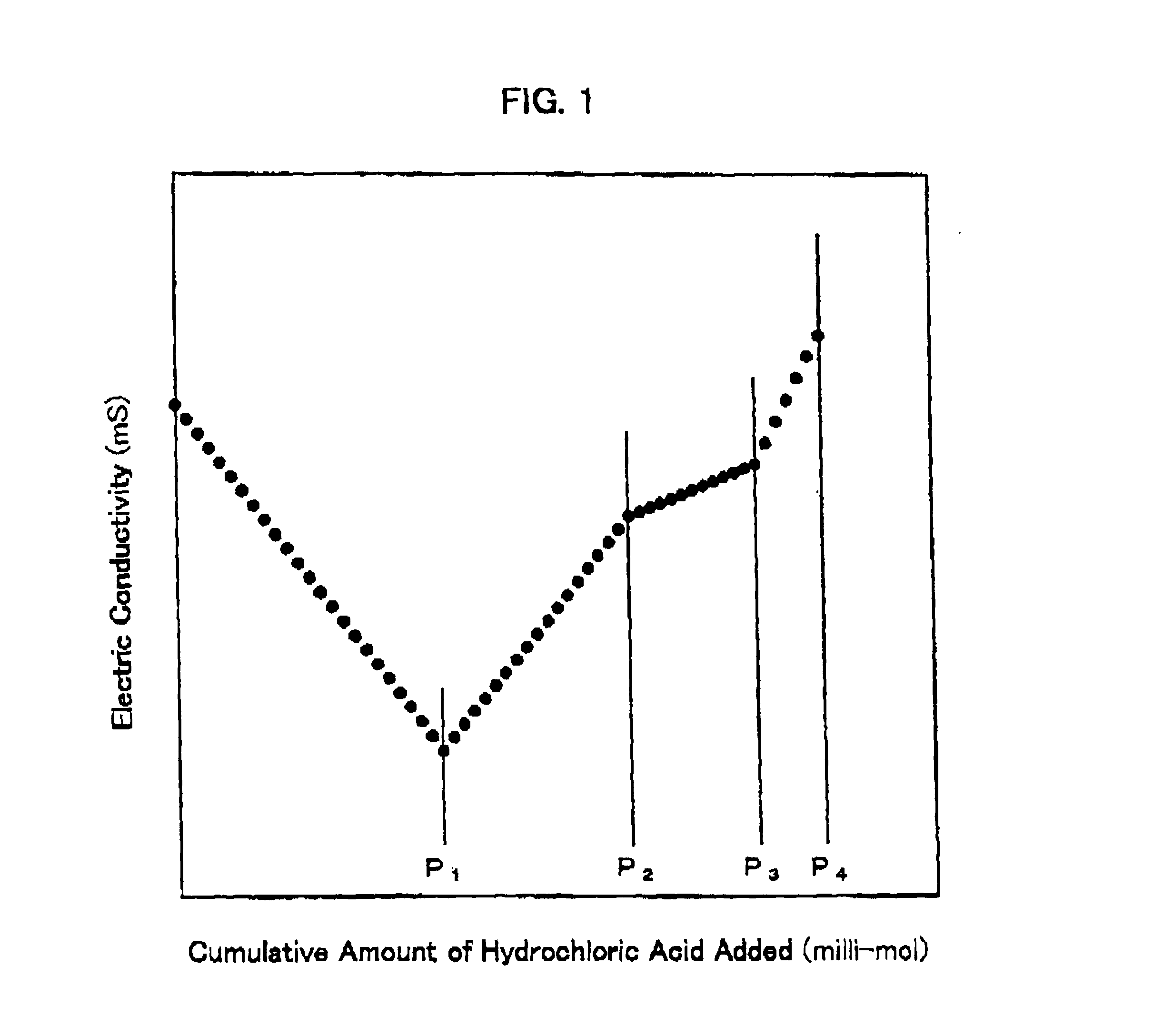Latex for dip forming and molded object obtained by dip forming
- Summary
- Abstract
- Description
- Claims
- Application Information
AI Technical Summary
Benefits of technology
Problems solved by technology
Method used
Image
Examples
example 1
The atmosphere within a polymerization reactor is replaced with nitrogen, and the polymerization reactor was charged with 34 parts of acrylonitrile, 59 parts of 1,3-butadiene, 7 parts of methacrylic acid, 0.5 part of a molecular weight modifier (TDM: t-dodecyl mercaptan), 150 parts of soft water, 2.5 parts of an emulsifier (sodium dodecylbenezenesulfonate), 0.2 part of an initiator (potassium persulfate) and 0.1 part of a reducing agent (ethylenediaminetetraacetic acid). Polymerization was carried out for 20 hours while the temperature was maintained at 30° C., and then a short-stopper was added to complete the polymerization.
Unreacted monomers were removed from the thus-obtained copolymer latex, and pH and concentration of the latex were adjusted to give a copolymer latex A having a solid concentration of 45% and a pH value of 8.3. Properties of the latex are shown in Table 1.
1.0 part of sulfur, 1.0 part of zinc oxide, 1.0 part of titanium oxide, 0.03 part of potassium hydroxide an...
examples 2-4
, COMPARATIVE EXAMPLES 1-3
The procedures for preparing copolymer latex A, described in Example 1, were repeated wherein the monomer composition was varied as shown in Table 1 with all other conditions remaining the same. Thus copolymer latexes B through G each having a solid concentration of 45% and a pH value of 8.3 were prepared. Properties of these latexes are shown in Table 1.
By the same procedures as described in Example 1, dip-formed articles were made wherein latexes B through G were used instead of latex A. The evaluation results of the dip-formed articles are shown in Table 1.
From the results shown in Table 1, dip-formed articles made from the copolymer latexes of the present invention in Examples 1 to 4 have a soft feeling and high tensile strength and tensile strength after immersion in water. In contrast, when latex E having a small total acid group content is used, the resulting dip-formed article has a soft feeling, but its tensile strength and tensile strength after i...
examples 5-10
The procedures for preparing copolymer latex A, described in Example 1, were repeated wherein the monomer composition was varied as shown in Table 2 with all other conditions remaining the same. Thus copolymer latexes H through M were prepared. The adjusted pH value of latex M was 5.6.
The total acid group contents of latexes H to M are in the range of 0.15 to 1.8 meq. CS1 values and CS2 values of latexes H to M were measured. The results are shown in Table 2.
By the same procedures as described in Example 1, dip-formed articles were made wherein latexes H through M were used instead of latex A, and 7 parts of the liquid dispersion of vulcanizer having a solid concentration of 50% was used which was prepared by mixing 1.0 part of sulfur, 1.5 parts of zinc oxide, 0.7 part of titanium oxide, 0.03 part of potassium hydroxide and 3.2 part of water. The evaluation results of the dip-formed articles are shown in Table 2.
TABLE 2ExampleExample No.5678910Monomers(parts)Acrylonitrile35453540203...
PUM
| Property | Measurement | Unit |
|---|---|---|
| Percent by mass | aaaaa | aaaaa |
| Percent by mass | aaaaa | aaaaa |
| Percent by mass | aaaaa | aaaaa |
Abstract
Description
Claims
Application Information
 Login to View More
Login to View More - R&D
- Intellectual Property
- Life Sciences
- Materials
- Tech Scout
- Unparalleled Data Quality
- Higher Quality Content
- 60% Fewer Hallucinations
Browse by: Latest US Patents, China's latest patents, Technical Efficacy Thesaurus, Application Domain, Technology Topic, Popular Technical Reports.
© 2025 PatSnap. All rights reserved.Legal|Privacy policy|Modern Slavery Act Transparency Statement|Sitemap|About US| Contact US: help@patsnap.com

